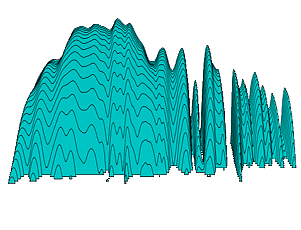I write regular small articles on my audio blog which I’ve created as a resource for audio enthusiasts. My primary interest is the speaker-room interface which I view as the most critical aspect of a sound system. The unique advantage of being a DIY enthusiast is that I can design and build both the speakers and room treatment to work together. I enjoy writing about audio and one of the great compensations is that in the process, my own ideas are clarified, refined and challenged.
On the work front, I run a small web design studio – Red Spade >
Room Measurement Service
I offer a room measurement and system calibration service in Melbourne, Australia. While it’s not very difficult to buy the tools and also not very expensive, many get lost in the maze of measurements and aren’t sure what to do with the results. This is where I come in. I take measurements and explain what they mean and what can be done to improve the performance.
Bass Integration
Many great systems fall down in the bass. Much has been published and discussed online about how to get better bass, but I have found most guides to be very much incomplete, tending to neglect significant aspects. People tend to stop at the appetiser. My mission with this guide is to inspire people to experience the entire 5 course meal.
My system
My system is currently “under the knife.” The system I’m currently building starts with a digital source into an Emotiva UMC surround processor. I use Behringer DCX as a digital active crossover for the main speakers which will be a custom designed Synergy horn. This is a point source 2 way horn where 6 mids share the same horn as the compression driver. This will cross to a sealed 18″ bass driver each side and a tapped horn sub under the floor. Surrounds will also be active with a MiniDSP crossover and Sineway amp modules.


